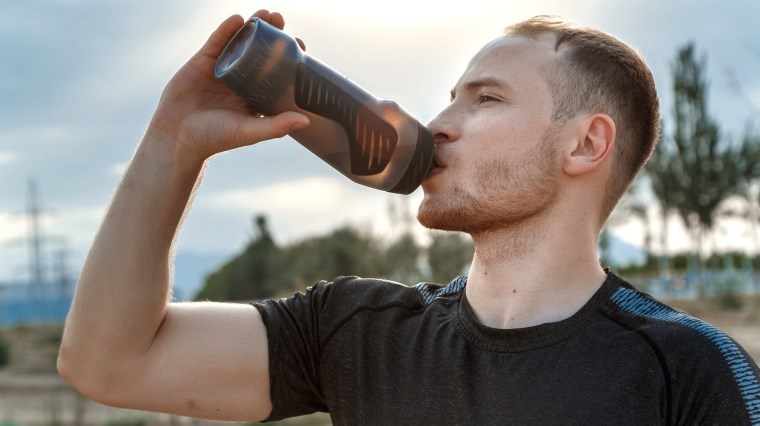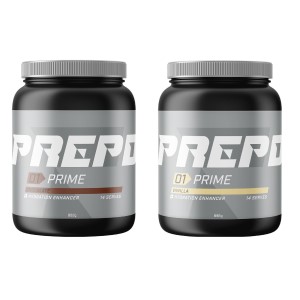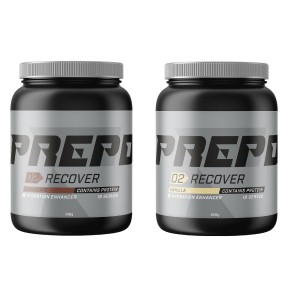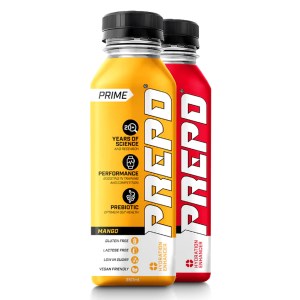A Runner's Guide To Hydration: The Sweat Rate Test

The sweat rate test is a valuable tool to learn more about your body's hydration demands during exercise.
Every athlete and every workout is different - with your body weight, genetics, gender, pace, fitness level and the external temperature all playing a part to determine on average how much you sweat. Knowing your average sweat rate in terms of fluid loss per hour gives you an idea how much you should drink to replace lost fluid, thereby reducing your risk of overheating and elevating your performance.
The old school concept of replacing fluid ml for ml is history - keeping in mind that your body and how it functions during activity is a lot more complicated than this simple equation. Although it is rare, it's also worth noting that hydrating by the ml for ml method can cause you to overhydrate - resulting in the sodium levels in your blood becoming diluted to a dangerous level (a condition called hyponatremia).
Instead, we look at your fluid loss results as a percentage of your body weight to determine whether you're drinking enough on your runs.
How to calculate your sweat rate
In short, the sweat rate test can be summed up as:
[Post-workout weight loss (kg) + fluid consumed (kg)] / exercise duration (hr) = sweat rate (L/hr)
We break down the maths for you below to guide you through the process step by step. Keep in mind that 1kg of water/sweat is equivalent to 1L of water/sweat - so you can look at the calculations below in terms of weight or volume - it's up to you.
Our example below is based on an 80kg athlete running for 1.5 hours and drinking 0.5L of water during that time.
1. Calculate weight loss:
Relieve yourself if needed before you run. Stand on your bathroom scales and take note of your pre-workout body weight and post-workout body weight. If possible don’t use the bathroom or eat in-between each weighing. It's best to dry off any sweat on your skin with a sports towel and weigh yourself naked for accurate results.
Subtract your post-workout body weight from your pre-workout body weight to determine the fluid loss in sweat as a measurement of kilograms or litres.
Pre-workout body weight (A) – post-workout body weight (B) = weight loss (C)
E.g. 80kg (A) – 78.5kg (B) = 1.5kg (or 1.5L) (C)
2. Calculate weight of liquid consumed:
Weigh your water bottle pre-run (when it's full) and post-run. This will allow you to drink as needed during your workout without skewing the results.
Subtract the pre-workout bottle weight from the post-workout bottle weight to find the fluid consumed in kilograms or litres.
Pre-workout bottle weight (D) – post-workout bottle weight (E) = fluid consumed (F)
E.g. 1kg (D) – 0.5kg (E) = 0.5kg (or 0.5L) (F)
3. Calculate total fluid loss:
Add your weight loss to the weight of fluid consumed.
Weight loss (C) + fluid consumed (F) = total fluid loss (G)
E.g. 1.5kg (C) + 0.5kg (F) = 2kg (or 2L) (G)
4. Calculate sweat rate per hour:
Remember to wear your sports watch to time the duration of exercise.
Divide your total fluid loss by the duration of your workout in hours.
Total fluid loss (G) / 1.5hr (H) = sweat rate per hour
E.g. 2kg (G) / 1.5hr (H) = Approx 1.3L per hour (I)
5. Calculate total fluid loss as a percentage of body weight:
Total fluid loss divided by pre-workout body weight multiplied by 100.
[Total fluid loss (G) / pre-workout weight (A)] x 100 = Body weight % lost as fluid (J)
E.g. [2kg (G) / 80kg (A)] x 100 = 2.5% (J)
Making the most of the sweat rate test

Important considerations
If you weigh less immediately post-exercise, your fluid loss is more than likely responsible for the difference in weight - especially if the workout was no longer than 90 minutes.
For longer workouts, weight loss may also be attributed to your body burning glycogen (your body's stored energy) to fuel your active muscles, which can skew the results. Therefore, the sweat rate test is best performed in relation to workouts between 45 minutes and 90 minutes long. Keep in mind the calculations above can become tricky at a shorter duration.
Understanding the results
Typically a healthy adult will have an average sweat rate of 1L - 1.5L/hr during moderate intensity, prolonged exercise - but this is a rough guideline and details such as your body weight and level of fitness should be taken into account.
For example, generally athletes with a smaller frame sweat less than athletes with a larger frame - so a 'normal' sweat rate for one person may be off the charts for the other. Regular runners with a high fitness level generally sweat less than new runners as their body has acclimatised overtime to stay cool more efficiently and handle increased physical stress or intensity with less effort.
The goal is to discover what is 'normal' for you under different conditions and as your fitness evolves. Rather than aiming to replenish 100% of fluid loss which is unrealistic in the real world, aim to replenish most of it (about 80%).
This is where your fluid loss as a percentage of body weight comes into play to estimate your hydration needs. It's generally considered that if your reduction in weight due to fluid loss is higher than 2% of your body weight (see step 5 above), it’s a safe bet that you should drink more to stay hydrated and maintain performance during exercise - and that includes potentially re-evaluating your pre-workout hydration strategy. For example, the runner in the calculations above with a fluid loss equivalent to 2.5% of their body weight should consider increasing their water intake next time they face similar running conditions.
Real-world applications
The sweat rate test can serve as a valuable indication of how much water you should carry on race day or on the trail in your water bottle or hydration pack.
Of course, we love that you're proactive about your hydration, but it's also important to note that running workouts and race day don't always go to plan. Therefore, the data you collect should be considered as a guide only. It is just as important to consider the factors in the moment to hydrate well according to the conditions and your physical exertion.
Be aware that although repeating the sweat rate test can give you a clearer idea of your average sweat rate, the results will vary depending on conditions such as the intensity, duration, external temperature and even your clothing - so it's always safer to be prepared with extra water.
Try the sweat rate test and calculate your fluid loss as a percentage of body weight under different conditions to give you a better idea of your hydration needs during any eventuality. You may also enjoy recording data such as temperature or tracking your running pace in km/hr using a sports watch to see how different environmental conditions and levels of intensity effect your sweat rate.
PREPD Hydration: Maximising your fluid intake
For competitive athletes looking to decrease dehydration-related fatigue and enhance performance during training, triathlon and other endurances races, PREPD Hydration is a valuable addition to your race day arsenal.
This scientifically backed hydration formula was developed by Flinders University in Adelaide in collaboration with Yale University (USA). It contains a resistant starch that amplifies fluid absorption of the large intestine – a job that’s typically reserved for the small intestine specifically. With your large intestine now in the picture, your body is more capable of putting the water you drink to good use to replenish the fluid lost in sweat.
Particularly in the scorching heat of summer, drinking PREPD Prime 6 – 18 hours before your race dramatically boosts your fluid absorption to perform at your peak for longer – so you feel more powerful even during the back half of your event.
Of course, your recovery is just as important as the training you put in. We recommend teaming up PREPD Prime with PREPD Recover – a recovery formula that you drink immediately after your event to increase fluid absorption in the 24 hours following a gruelling sweat session - be it on the road or trail.
Hydration is crucial to support your body's recovery - allowing you to wind down and return to a pre-workout state as efficiently and effectively as possible. Effective recovery means you'll be primed to perform on your next sweat session - making PREPD Hydration a real game-changer for elite athletes.
If you liked this, then you'll love:
8 Essential Hydration Tips About Water, Sports Drinks & Sweat
How To Beat The Heat, Stay Motivated & Fit This Summer
Happy running!




